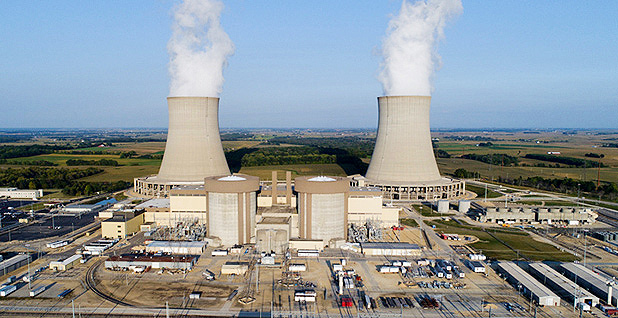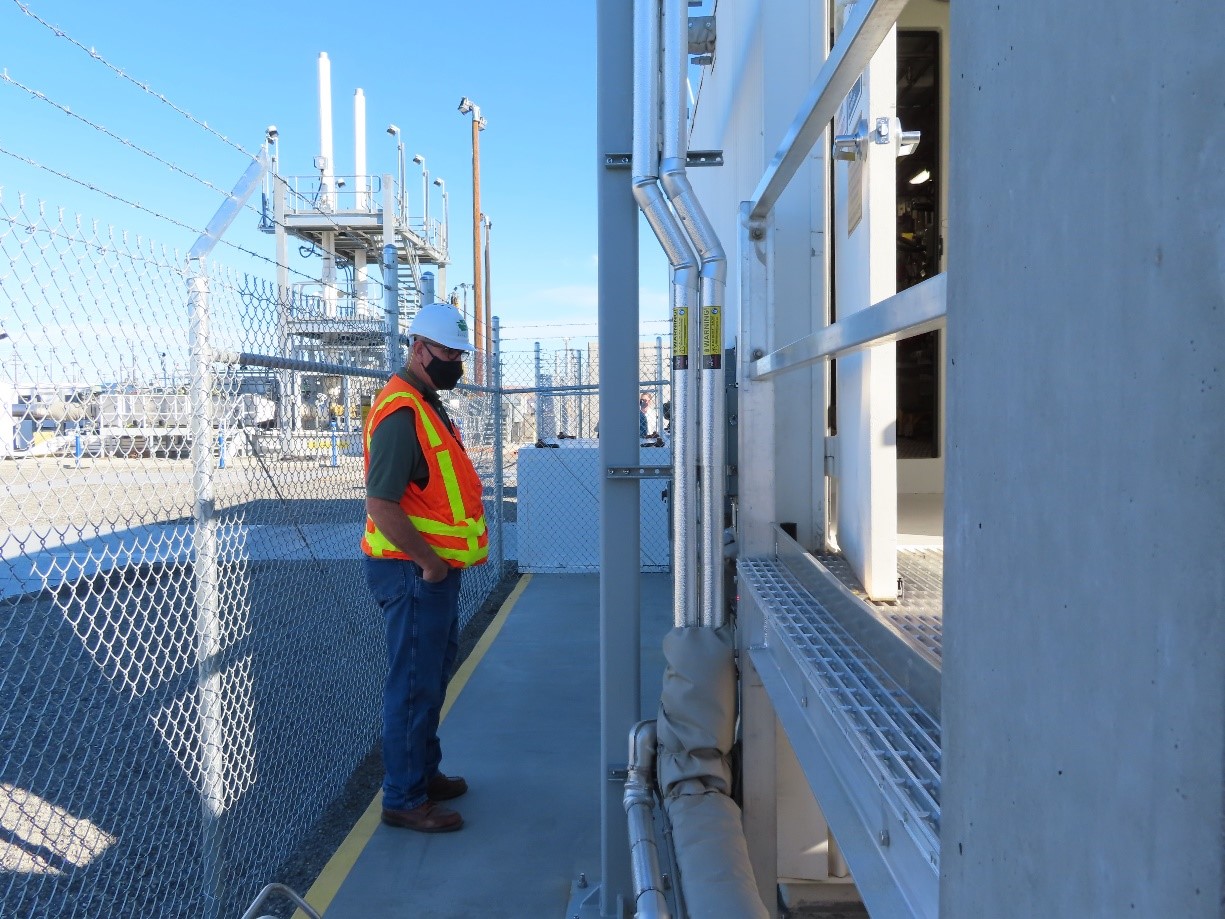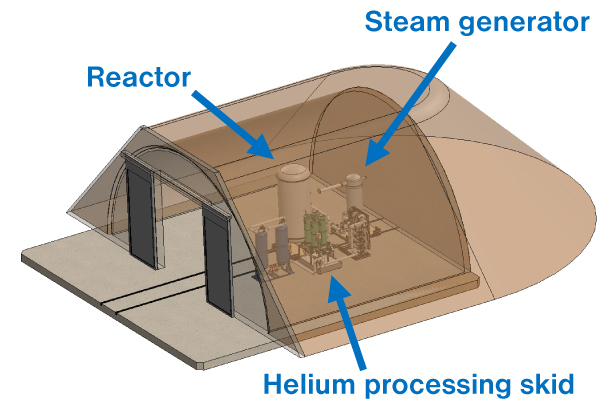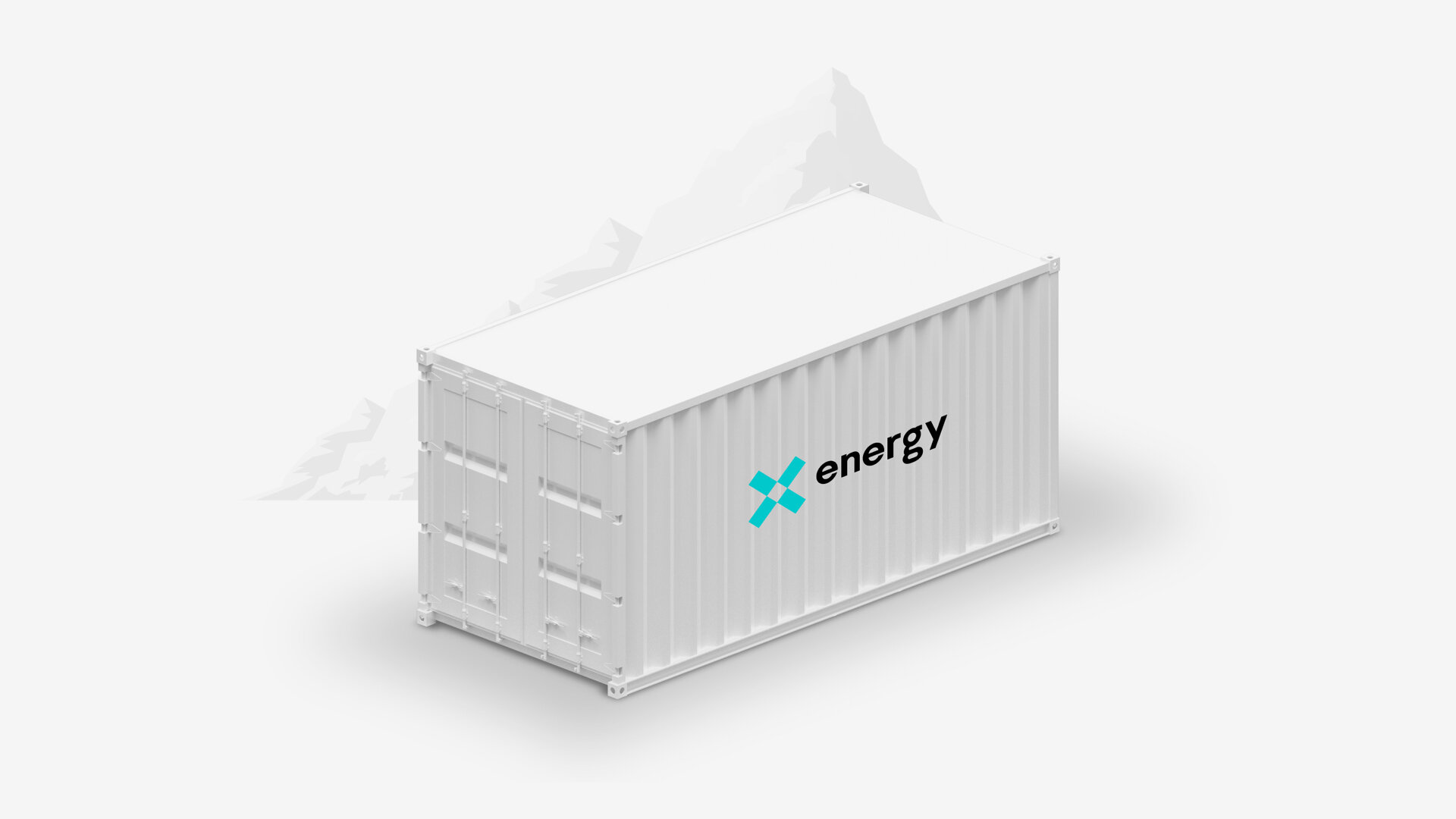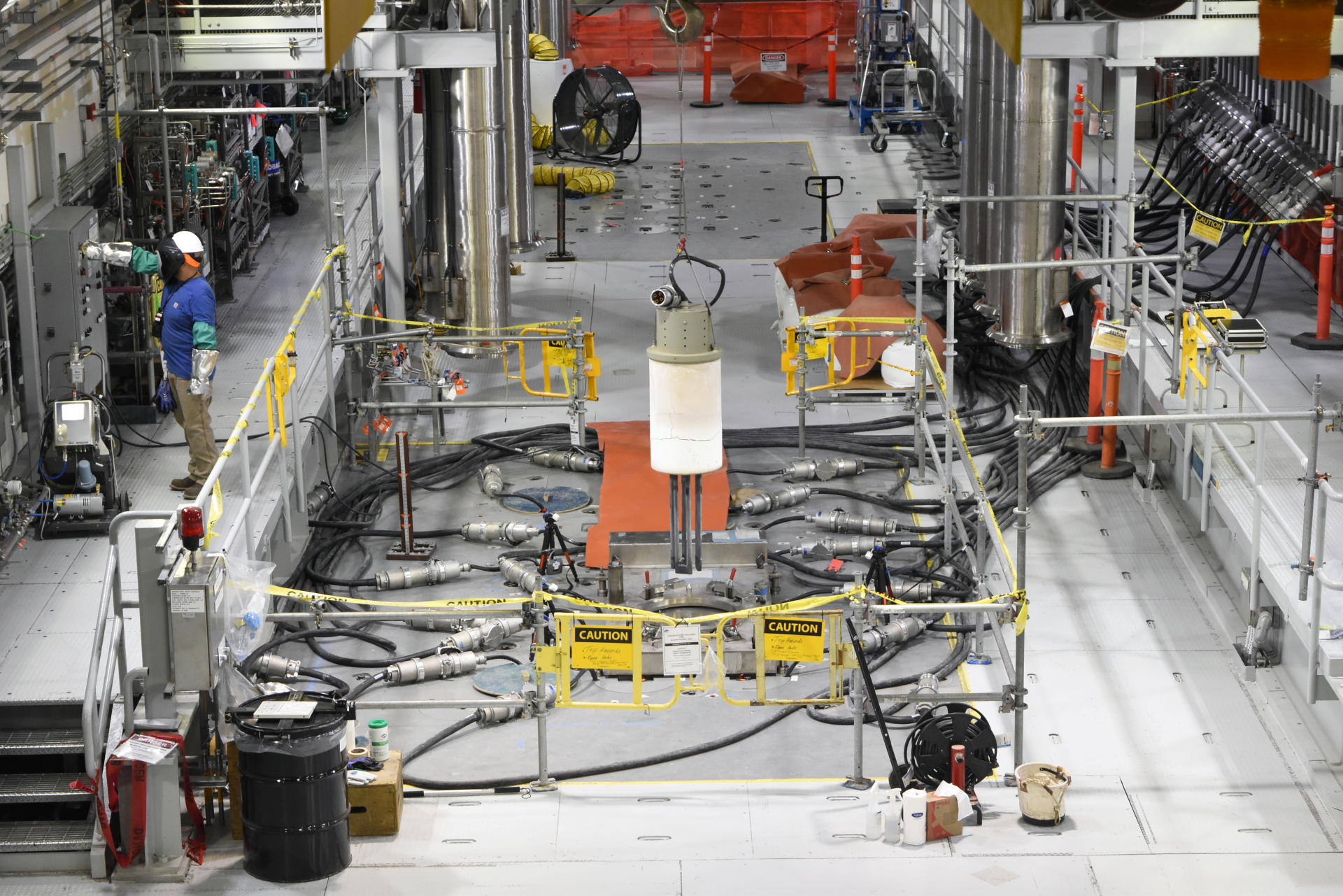Davis-Besse nuclear power plant. (Photo: NRC)
In a filing Monday with the Federal Energy Regulatory Commission, Vistra Corporation committed to divesting itself of two power generation assets to help alleviate concerns over its proposed acquisition of Energy Harbor.
Conceptual art of a direct air capture CO2 removal system. (Image: DOE)
Given how much carbon dioxide has been released into the atmosphere from fossil fuels, replacing those fuels with clean options like nuclear energy is urgent, but could be likened to shutting the barn door after the proverbial horse has bolted. But what if you could also round up excess CO2 already in the atmosphere? That’s the goal of direct air capture (DAC) and other so-called negative emission technologies—to capture climate warming CO2 for use in products or processes or for permanent storage.
The Byron nuclear power plant. (Photo: Constellation Energy)
Constellation Energy has announced an agreement with Commonwealth Edison (ComEd), Illinois’s largest electric utility, to power the latter’s 54 offices and metered facilities with locally produced nuclear energy, 24/7.
A Department of Ecology inspector at the Hanford Site. (Photo: Department of Ecology)
Washington state’s Department of Ecology said it has reached a settlement with the Department of Energy over access to data the state described as “critical” to the cleanup of the Hanford Site near Richland, Wash.
Westinghouse president and CEO Patrick Fragman (seated at left) and Energoatom president Petro Kotin (seated at right) sign an MOU on AP300 deployment in Ukraine. Standing behind Fragman and Kotin is Ukrainian energy minister German Galushchenko. (Photo: Energoatom)
Westinghouse Electric Company and Ukraine’s nuclear operator Energoatom have signed a memorandum of understanding on the development and deployment of the American firm’s AP300 small modular reactor in the Eastern European state.
Framatome CEO Bernard Fontana (left) shakes hands with Hungarian energy minister Csaba Lantos. (Photo: Framatome)
France-based Framatome and the Hungary’s Ministry of Energy agreed this week to strengthen their relationship in the field of nuclear energy, including in such areas as fuel supply, education, research and development, implementation of new technologies, and long-term operation.
Bruce Power operations staff synchronizes Unit 6 to the Ontario electrical grid on September 8. (Photo: Bruce Power)
The ongoing major component replacement (MCR) project at Ontario’s Bruce nuclear power plant reached another milestone last Friday with the reconnection to the grid of the facility’s Unit 6 reactor. According to a release from plant operator Bruce Power, the work was completed ahead of schedule and on budget despite the challenges of the COVID-19 pandemic.
A startup heater is removed from a melter in the Vit Plant’s Low-Activity Waste Facility. (Photo: DOE)
Workers at the Hanford Site’s Waste Treatment and Immobilization Plant, also known as the Vit Plant, have begun removing the first three of 18 temporary startup heaters, the Department of Energy announced on September 12. The startup heaters were used to raise the first of two 300-ton glass melters in the plant’s Low-Activity Waste Facility to its operating temperature of 2,100°F.
The SONGS independent spent fuel storage installation. (Photo: SCE)
Spent Fuel Solutions, which advocates for a permanent disposal solution for the nation’s spent nuclear fuel, will be holding an informational webinar on Friday, September 15, from 11:00 a.m. to noon (PDT).




 Allied Power has acquired Dominion Engineering, Inc. (DEI), Allied announced last week. Financial terms of the deal were not disclosed.
Allied Power has acquired Dominion Engineering, Inc. (DEI), Allied announced last week. Financial terms of the deal were not disclosed.